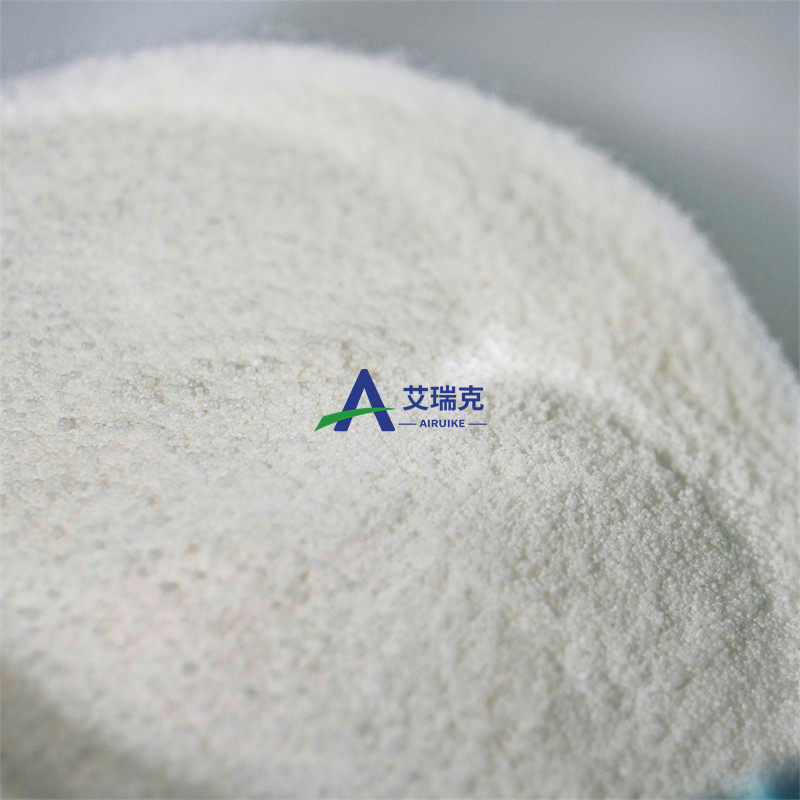End of 2019: Research Progress of Alzheimer's disease
-
Last Update: 2019-12-28
-
Source: Internet
-
Author: User
Search more information of high quality chemicals, good prices and reliable suppliers, visit
www.echemi.com
Alzheimer's disease is an irreversible neurodegenerative disease, which will gradually destroy the memory and thinking ability of the brain Alzheimer's disease is currently the sixth leading cause of death in the United States, but recent estimates suggest it may be the third leading cause of death in the elderly, behind heart disease and cancer Alzheimer's disease is named after Dr Alois Alzheimer In 1906, Dr Alzheimer noticed a change in the brain tissue of a woman who died of a mental illness Her symptoms include memory loss, language problems and unpredictable behavior By examining the brains of the dead, Dr Alzheimer found many abnormal clumps (now known as amyloid plaques) and tangled bundles of fibers (now known as neurofibrils or tau tangles) So far, these plaques and tangles in the brain are still considered to be some of the main features of Alzheimer's disease Another feature is the loss of connections between nerve cells (neurons) in the brain The prevention and treatment of Alzheimer's disease has always been an urgent problem in the field of medicine In recent years, researchers have made unremitting efforts This article will make a brief inventory of the relevant research in the field of Alzheimer's disease in 2019, hoping that readers will like it The exploration of the pathogenesis of Alzheimer's disease in the pathogenesis of Alzheimer's disease, many studies revealed the origin of the disease and the root cause of its deterioration For a long time, we have known that pathological changes, such as accumulation of amyloid plaques, have taken place in the brain of Alzheimer's patients long before symptoms such as memory loss appear According to a new study published in communications biology by neuroscientists from Massachusetts Institute of technology, they put forward new ideas on the accumulation mechanism of amyloid plate in mouse brain This study shows that the accumulation of amyloid protein in the relevant areas of human brain is closely related to the deterioration of the disease Using a brain labeling technique called switch, the researchers imaged the brains of mice at different ages, and found that plaques first appeared in deep brain structures, such as the papillary body, lateral septum and hypothalamus, then spread along specific brain circuits within 6 to 12 months, and finally entered the hippocampus (memory off) Key area) and cortex In addition, according to a study published in the journal Cell by researchers from the Massachusetts Medical College, gene mutations cause a mutation in a protein called ataxin-1, or regulate the activity of β - amylase, which increases an individual's risk of Alzheimer's disease 2 In an article published in the journal PNAs, researchers from Binghamton University and the University of Colorado worked together to map the structure of "amyloid" aggregates 3 In this study, the authors used high-resolution solid-state NMR spectroscopy to study these fibrous structures Their work reveals that these fibers may have been altered in the molecular structure of amyloid deposition in human brain This may be the cause of the disease In a study published in the journal Science, researchers from the University of technology in Munich, Germany, found for the first time that glutamate, an excitatory neurotransmitter, persists for too long near active neurons This leads to pathological over stimulation of these neurons, which is likely to be a key factor in the loss of learning and memory in Alzheimer's disease patients As we all know, neurons use chemicals called "neurotransmitters" to communicate with each other As one of the most important chemicals, glutamate plays an important role in activating adjacent neurons The researchers found that under the action of β - amyloid protein molecules: glutamate is difficult to transport out of the synaptic space normally Therefore, the high concentration of glutamate in the synaptic space of highly active neurons lasts for a long time, which leads to high stimulation intensity They tested the mechanism using β - amyloid molecules from patient samples and various mouse models, all with similar results In an article published in the journal Cell reports, researchers at the University of California, San Diego (UCSD) School of medicine used transcriptomics to compare information from 414 clinically diagnosed Alzheimer's patients Finally, the map of gene protein interaction was drawn The authors believe that the combination of protein interaction and gene interference can provide a comprehensive framework for the description of the changes of molecular networks in the pathogenesis of Alzheimer's disease Similarly, another study was published in the journal Neuron In this study, researchers from Massachusetts General Hospital revealed the interaction mechanism between CD33, a key gene for promoting inflammatory response in the brain of patients, and TREM2, an anti-inflammatory gene, and emphasized the role of their interaction in the origin of Alzheimer's disease 6 In another study published in nature communications, researchers at the brain science center of the Japanese Institute of physics and chemistry revealed the role of a gene called Capon in regulating the pathological process of amyloid plaques and tau proteins A study published in the journal Nature Neuroscience linked Alzheimer's to autophagy activity In Alzheimer's disease and other dementia, the accumulation of protein tau and β - amyloid in the brain is the cause of cell death In the new animal model, the researchers showed that when mitochondrial autophagy activity increased, the rate of this accumulation process slowed down Another study, also published in the journal Nature Neuroscience, revealed the cause of the symptoms of cerebral ischemia in Alzheimer's.8 The authors found that inflammatory responses in patients' brains lead to the aggregation of neutrophils, which in turn leads to the blockage of capillaries in the brain Finally, it leads to the decrease of blood flow and the appearance of ischemic symptoms In a study published in the journal Science, researchers from Washington University's St Louis School of Medicine found that lack of sleep increased the level of tau, a key protein in Alzheimer's disease In this study, the researchers inoculated tau protein clumps into the hippocampus of a group of mice and then kept them awake for a long time every day Another group of mice were also injected with tau tangles, but were not forced to stay awake Four weeks later, tau tangles spread further in sleep deprived mice than in resting mice These findings suggest that sleep deprivation contributes to Alzheimer's and that good sleep habits may help keep the brain healthy What are the risk factors for Alzheimer's disease? Studies have shown that genetic factors affect people's risk of Alzheimer's disease In a research report published in the Journal of Science Translational Medicine, scientists from the University of Washington School of medicine and other institutions identified a pair of risk genes ms4a4a and trem210 that affect late-onset and early-onset Alzheimer's disease TREM2 is a special protein, which can help microglia clear away the excessive amyloid protein and tau protein in Alzheimer's disease In this study, the researchers measured the level of soluble TREM2 protein in cerebrospinal fluid of 813 individuals About 30% of the participants also carried the mutation of ms4a4a gene, which also affected the risk of Alzheimer's disease The researchers found that the high level of soluble TREM2 in cerebrospinal fluid seems to have protective effect, while the low level of TREM2 protein will increase the risk of Alzheimer's disease in individuals, while other proteins are directly related to the mutation of ms4a4a gene regardless of the level In addition, the occurrence of Alzheimer's disease is closely related to other diseases For example, in a study published in the journal Acta neuropathologica, researchers at the University of Washington School of Medicine found a strong link between promoting blood circulation in cardiovascular diseases and the risk of Alzheimer's disease For a long time, scientists have known the relationship between ApoE gene mutation and Alzheimer's disease: ApoE gene is mainly involved in the metabolism of cholesterol and lipid, which will double the risk of Alzheimer's disease in some patients and increase the risk of other patients by 12 times In the study, the researchers identified other DNA sites that mediate the risk of cardiovascular disease and Alzheimer's disease The results show that regardless of the cause, cardiovascular disease and Alzheimer's disease may occur at the same time due to genetic association, that is to say, if carrying specific gene mutations, there is not only the risk of cardiovascular disease, but also the risk of Alzheimer's disease In an article published in the journal Nature communications, scientists from the University of Rochester found that the system of brain waste removal is mainly driven by adjacent arteries, and the change of pulsation induced by hypertension may reduce the efficiency of waste removal, thus reducing the efficiency of brain work, which explains hypertension Association with Alzheimer's disease 12 In a study published in the journal JAMA network open, scientists from the University of Indiana School of Medicine found that liver dysfunction or Alzheimer's disease was associated with 13 In this paper, the researchers analyzed the relationship between blood based biochemical markers of liver function and established biomarkers of Alzheimer's disease (including multimodal neuroimaging parameters), and found that blood biomarkers that can reflect liver function are directly related to brain imaging and CSF biomarkers related to Alzheimer's disease Finally, hormone therapy may also increase the risk of Alzheimer's disease In a study published in the journal BMJ, the authors found that long-term use of oral hormone therapy was associated with an increased risk of Alzheimer's disease in postmenopausal women Another study, published in the journal JAMA network open, revealed that hormone therapy for prostate cancer may increase the risk of Alzheimer's and dementia Early diagnosis of Alzheimer's disease for the early diagnosis of Alzheimer's disease, the main research focus on the aspect of blood detection According to a study published in the Journal of clinical epigenetics, the authors measured the methylation level of DNA isolated from blood samples of Finnish twins, and found epigenetic markers related to Alzheimer's disease in different regions of the genome One of these markers is also stronger in brain samples from people with Alzheimer's disease In addition, a study of Swedish twins confirmed the link between the marker and Alzheimer's disease.16 In a study published in the Journal of Alzheimer's & dementia: diagnosis, assessment & release monitoring, researchers at Ruhr University in Bohong have successfully detected the incorrect folding of amyloid β protein in blood samples 17 If the fruit can be used in clinical practice, it can be used in patients' symptoms
This article is an English version of an article which is originally in the Chinese language on echemi.com and is provided for information purposes only.
This website makes no representation or warranty of any kind, either expressed or implied, as to the accuracy, completeness ownership or reliability of
the article or any translations thereof. If you have any concerns or complaints relating to the article, please send an email, providing a detailed
description of the concern or complaint, to
service@echemi.com. A staff member will contact you within 5 working days. Once verified, infringing content
will be removed immediately.







